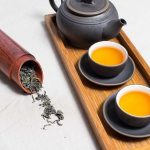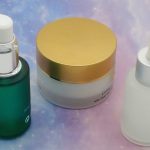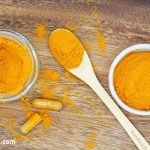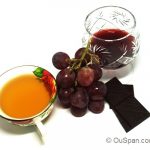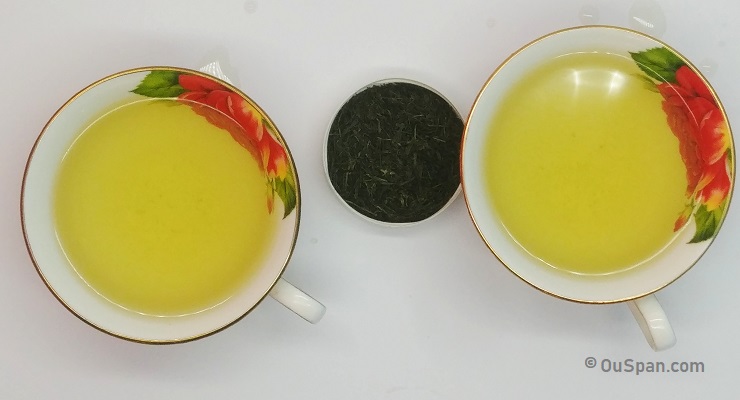
Takeaways
• Loose leaves provide more aroma and beneficial ingredients
• Matcha has the best catechins concentration
• When buying green tea, check regions, buy the first harvest, and certified organic
Green, black, white, oolong and pu-erh teas are derived from the Camellia sinensis plant. The difference in character and properties between teas depends on when they are plucked and how they are processed.
The health benefits of all types of tea have been attributed to the presence of antioxidants (flavonoids), catechins, polyphenols, and phytochemicals. Amongst tea’s most potent antioxidants is EGCG (Epigallocatechin gallate - the most abundant catechin) which helps with reduced risk of different diseases including cancer and cardiovascular issues.
Green Tea Types
| Loose Leaves
During tea preparation, tea leaves efficiently move through the hot water, swell and release maximum bioactive compounds that will bring an excellent color and flavor. It was found that green tea brewed from loose leaves provides more aroma and beneficial ingredients without releasing too much bitter tannin.
A regular 8-oz (250 mL) cup of brewed green tea from loose leaves contains 50–100 mg of catechins and 30–40 mg of caffeine. However, the concentration of bio-active compounds of green tea can vary widely according to preparation methods, that is, brewing time or water temperature.
There is a wide range of green tea differentiated by factors such as the timing of the harvest, cultivation methods, time of harvest, and processing methods.
More Facts about Loose Leaves Tea
- Growing in the shade for 7 to 30 days before harvesting, tea leaves accumulate more green chlorophyll pigment and amino-acid L-Theanine. Slightly changes in the compounds balance add sweet taste and vegetal flavor. The brewed shade-growing tea is greener than sun-growing green tea, aromatic and sweet.
- Growing under the sun, green tea produces more tannin and less L-Theanine. The brewed tea has a mild sweetness with slightly astringent taste. If steeped more than 3 minutes, tannin will release and produce bitterness. The color of this tea when brewed is more yellowish.
- Dried loose tea leaves are usually stored in a dark, dried, airtight container or a tea caddy that prevent it from deterioration primarily from oxidation.
- Loose-leaf green tea can be infused 2-3 times.
Most Popular Loose Leaves Japanese Tea
- Sencha is the most popular type of green tea in Japan. Made from the leaves from the first harvest. As soon as the tea leaves have been picked, they are steamed, dried and rolled.
- Gyokuro - shade-grown tea plants are covered with cloth or reed screen approximately for 20 days before picking. The highest and more expensive grade. The way to process is similar to Sencha.
- Kabushecha - shade-grown tea plants, covered with cloth or reed screen for 7-10 days. The way to process is similar to Sencha and Gyokuro.
| Matcha
The purest form of powdered tea, made from a Tencha leaf of Camellia Sinensis plant. Because of the Tencha leaf is obtained from the first harvest, Matcha contains more antioxidants, caffeine, and amino acids than other kinds of green tea. ConsumerLab.com reported that Matcha green tea is provided the best catechins concentration up to 109 mg of EGCG per serving. A cup of serving size contains 34 mg caffeine. The health benefits of Matcha beat other green teas because tea drinkers ingest not only brewed water but the whole leaves (fiber and chlorophyll).
Traditionally, the Tencha leaf is obtained once a year in spring. However, the high demand for Matcha green tea in the world causes the industry adopted new methods Matcha productions, including manufacturing tea from later harvest and employing mechanical processes that increase productivity but reduce a quality.
Here 3 simple tips when shopping for high-quality Matcha tea:
- Origin: Be sure the tea comes from Japan
- Harvest: Be sure the tea comes from the last first harvest
- Price: Do not overpay. Ceremonial Matcha could be found for $25-$50 (30-40g).
| Bagged Tea
Cheap tea bag
The leaves used in most cheap tea bags are actually small particles of broken green tea leaves known as Dust and Fanning. Finely chopped and torn low-quality leaves have a huge compromise in terms of aroma and ingredients content. The higher surface of particles has easily interacted with moisture and oxygen that lower tea quality. When steeped, they'll even release more tannins than whole tea leaves, resulting in a bitter astringent brew.
The tea dust is bagged into bleached papers that have a fluoride and chloride residue. Other chemicals such as dioxin and epichlorohydrin are used for tea bags production. Even trace amount those chemicals can put customers at a greater risk of health problems.
More Facts:
- Often stapled by metal, tea bag creates hardly recycled waste.
- Bagging and packaging process makes tea bags more expensive than loose leaves.
Best Quality Tea Bag
Making a cup of green tea from tea bag is more convenient. If you prefer bagged green tea, choose the best quality pyramid open-wave biodegradable sachets with premium loose leaves.
| Bottled Green Tea
Avoid bottled sweetened green tea. Most of them are sugary water with just trace amounts of the beneficial green tea ingredients. According to ConsumerLab.com, bottled green teas may contain just 4 mg to 47 mg of EGCG per cup or may not contain it at all.
Tips to Choose Right Green Tea
| Check Regions - Buy Green Tea from Japan
ConsumerLab tested a variety of green tea products and has found that some green tea from China is contaminated with lead. According to the analysis, tea from brands like Lipton and Bigelow contained up to 2.5 micrograms of lead per serving compared to no measurable amounts in Teavana brand, which gets its tea leaves from Japan. Other sources reported that due to soil and water pollution, tea imported from Brazil has the high concentration of fluoride and aluminum.
| Choose First Harvest
Season of harvesting and age of leaves are major factors affecting the tea quality. Green tea from the first harvest in spring (March and April) has better quality and aroma. Some studies have demonstrated that young leaves have the highest content of L-theanine and EGCG.
| Buy Organic Green Tea
When buying tea, you should select the certified organic product growing in a healthy and pollution-free environment. Organic tea prohibits the use of synthetic fertilizers, herbicides, and pesticides.
Related
Green tea, native to China and Japan, has been drinking for centuries and still remains everyday drink...
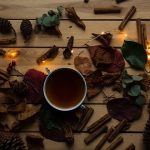 Tea Health Benefits -Tea, Tea, And Then Some More Tea
Tea Health Benefits -Tea, Tea, And Then Some More Tea
The health benefits of tea have been attributed to the presence of antioxidants, catechins, polyphenols, and phytochemicals...
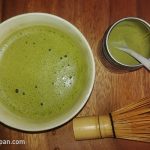 Matcha Reviews – The Top Best Matcha Green Tea
Matcha Reviews – The Top Best Matcha Green Tea
The green tea leaves contain an antioxidant epigallocatechin-3-gallate, caffeine, amino-acid L-Theanine, Folate, Choline, Riboflavin...
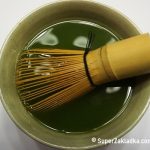 Surprising Things About Matcha Green Tea
Surprising Things About Matcha Green Tea
Matcha is a Japanese word that literally means 'powdered green tea'...
 Brewing Green Tea Correctly - Loose Leaves
Brewing Green Tea Correctly - Loose Leaves
Brewing green tea properly allows to release maximum beneficial compounds....
